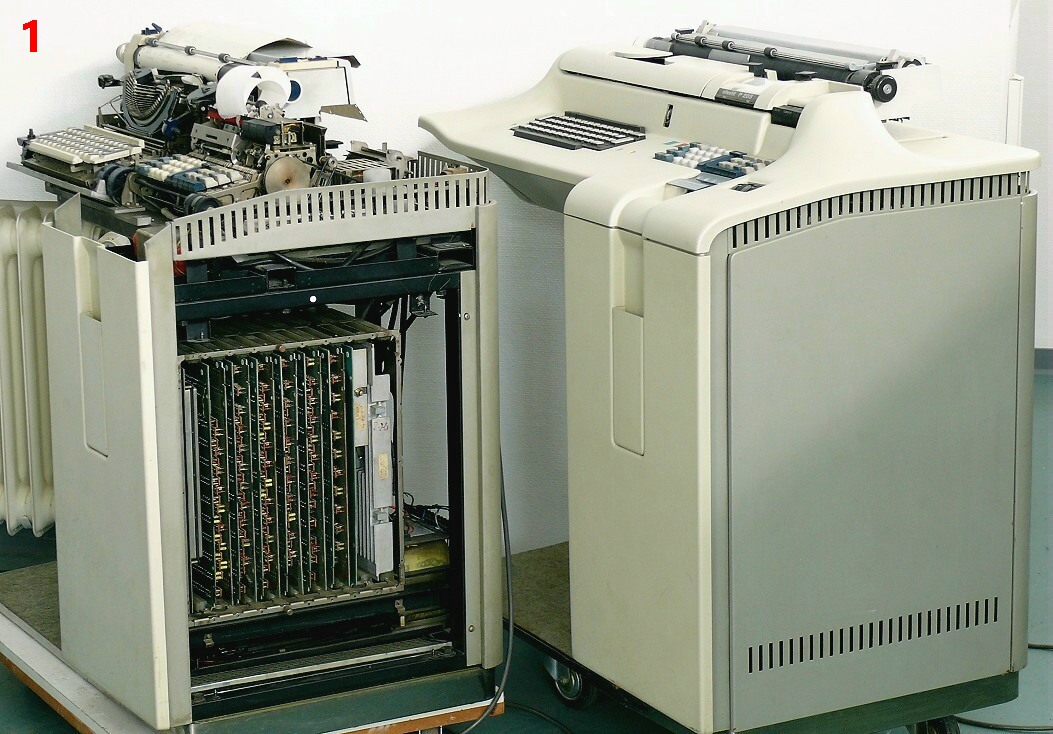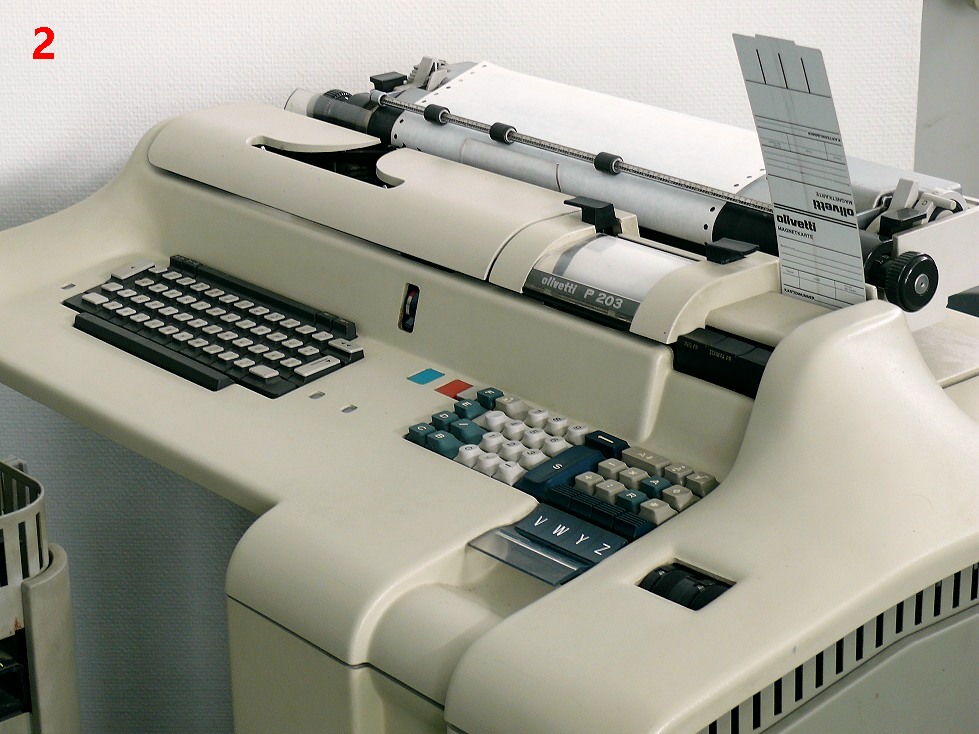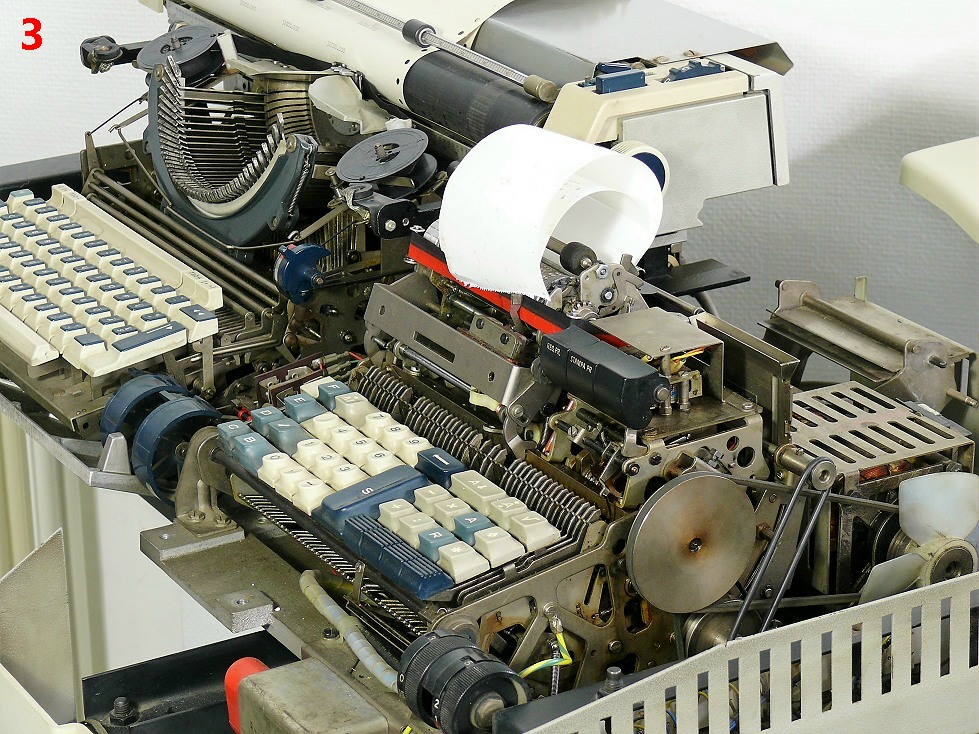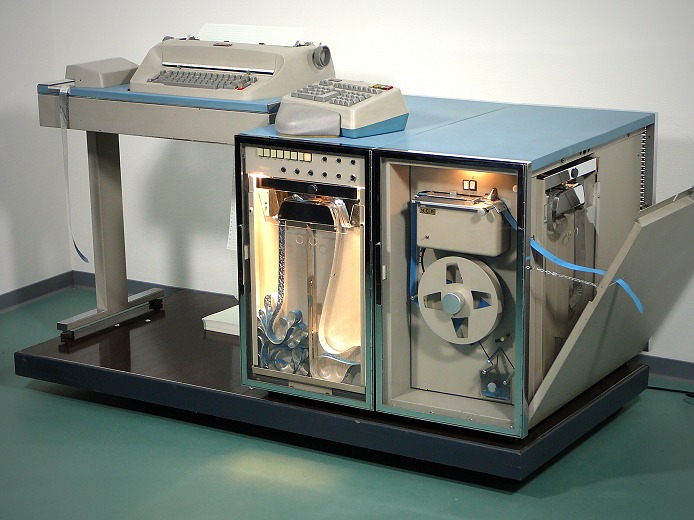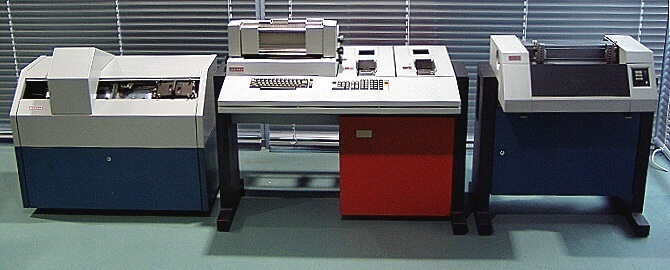Early commercial computers
In contrast to computers used for scientific applications, commercial data processing systems have a different structure, since they are optimized to support large storage systems and to process lots of data, as in payroll applications and the like. Sometimes the distinction between scientific and commercial systems is not a clear one. The examples below are typical small to medium systems for commercial applications.
Olivetti P 203
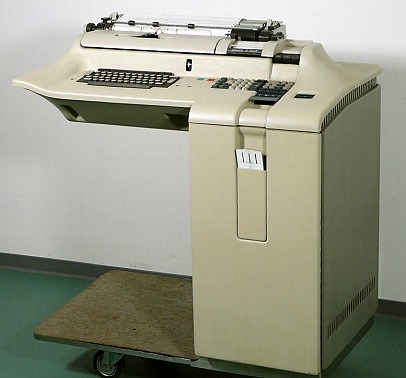
1967 the PROGRAMMA 101 was not only
extended with respect to memory but also coupled to an electric typewriter.
This made it possible to print the results of a computation. Nevertheless,
this combination was restricted to printing numeric values only. If text was
required on a printout it had to be typed manually.
The typewriter could also be used standalone without control be the PROGRAMMA 101.
The memory system, which is based on the magnetostrictive effect, has an overall capacity of 320
bytes organized as 10 registers with 30 digits each.
This early "personal computer" was designed by the italien artist Mario
Bellini. Its unique design won several avards. Even today it is admired for
its aesthetics.
Following Olivetty computers were just plain cubes. Moving
this unique piece of computing history is quite a feat at 130 kg.
The pictures above can be enlarged by clicking on them. The first picture shows the first model of this machine as well as its successor system with a faster typewriter (on the right). The second picture is a detail photograph. The third picture shows the incredibly amount of mechanical parts in this system. Both machines in the museum are fully operational.
NCR 446
The NCR 446 is a typical example of a 2nd generation computer (transistorized). It was developed 1966/67 in Germany at the "National Registrier Kassen GmbH" in Augsburg by four engineers fresh from the university. One year later their development was finished and the system announced.The architecture is rather unique. Programs are stored on a paper tape while operations are controlled by means of a threaded wire ROM. The system was sold as a accounting machine but was not limited to that area of application.
The system not only contains the paper tape reader for the program control, but also two paper tape readers for input data, one paper tape punch, a keyboard, and an IBM ball-head typewriter.
This system was quite expensive. The basic model without a paper tape punch and without the additional paper tape readers for data input was sold for about 35,000 DM (about 18,000 EUR) - about as much as three mid-class cars would have cost at the same time.
The NCR 446 was the first "small" commercial system which was able to print text as well as numerical values. Such a machine was used by structural engineers to perform the necessary calculations and directly generate a printout that could be used by the customer. (Competing systems like the Olivetti Programma 101, 203 could only print plain numbers on a small strip of paper.)
Watching the operation of the machine is a great experience. Things like the calculation of a square root allow the viewer to get an idea of the underlying algorithm. Since the program is stored on a paper tape, every step performed by the machine can be seen.
Clicking on the picture yields a
Paper tape accessories:
Also interesting are typical paper tape accessories as shown below. It is next to incredible that not too far ago programs had to be prepared with tools like these. The figure below shows a manual paper tape punch on the left which can be used to punch programs on a paper tape. For the most basic version of the NCR 446 which lacked the attached paper tape punch, this was the only way to create program tapes!
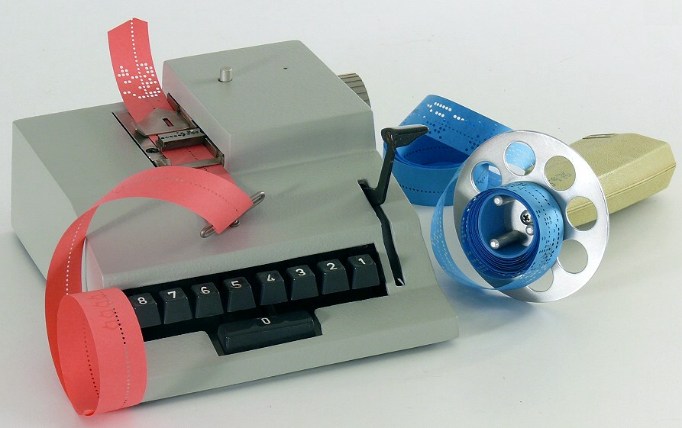
Programming in those days was done as follows: First, the program was written
down by hand. Each character was then translated manually using a NCR
supplied code table to its corresponding numerical code. The paper tape was then
punched by a secretary. Correcting errors was obviously rather cumbersome and
time consuming.
The NCR 446 in the museum's collection allowed the creation of paper tapes by
means of the built-in keyboard and the automatic paper tape punch
unit at an additional cost of 20,000 DM (10,000 EUR).
The motor driven paper tape winder shown on the right could be used to wind
the paper tapes after using them on the computer.
NIXDORF 820
A typical small to medium data processing system is the NIXDORF 820 built in 1969/1970. This system is built entirely from modules, has a magnetic account reader and a threaded ROM which was user modifiable. The console consists of a typewriter, the magnetic account reader and two punch card readers. In addition to this the system supports a card punching unit, a high speed matrix printer (visible on the right), two cassette tape drives and a stand alone card puncher (IBM or YUKI, see above). Clicking on the picture will yield a more detailed version of it.
